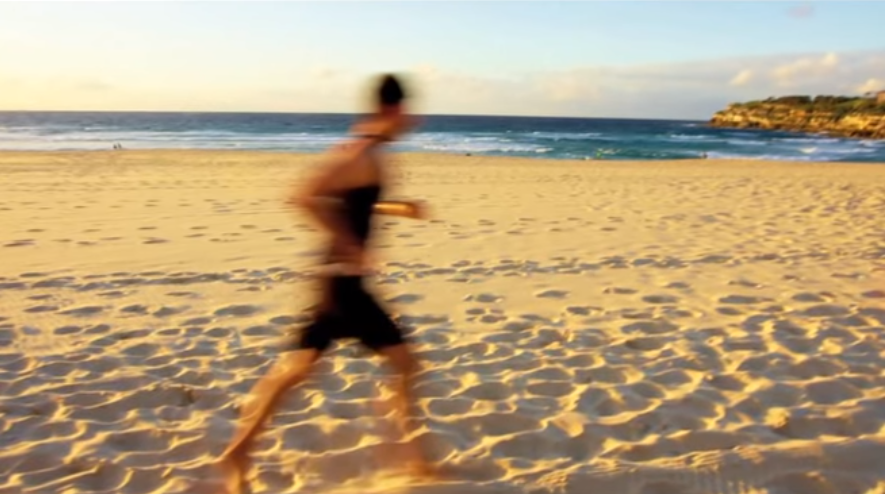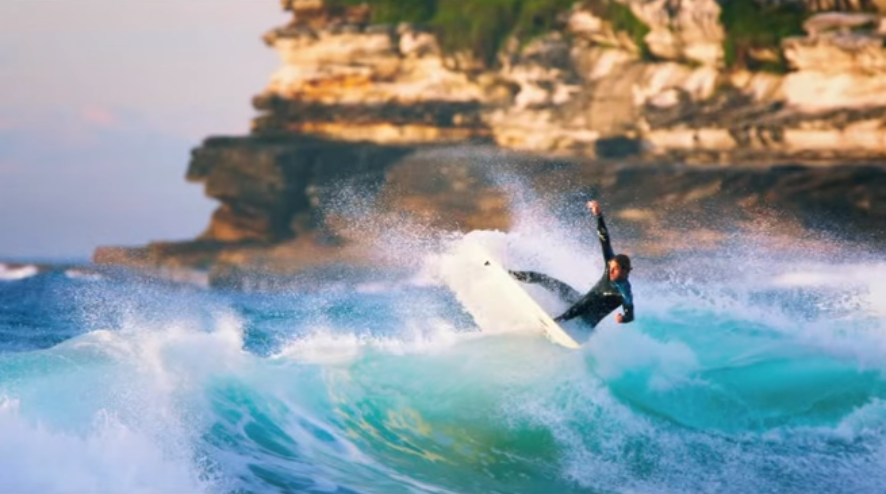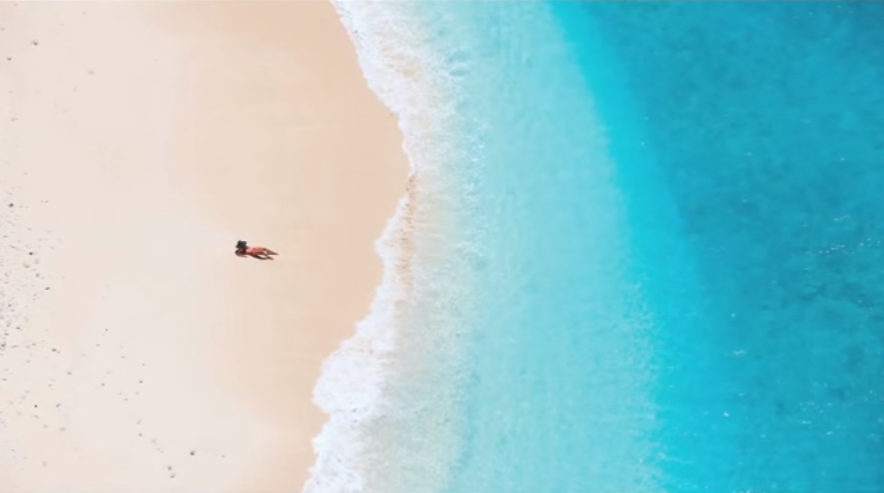
When it comes to beach and surf photography, Eugene Tan is one of the best. The guru behind Aquabumps, a website and gallery in Sydney's Bondi Beach, Eugene shoots in the water regularly and is well versed in how to make water, beach and sports photography truly come to life.
Surfer running on beach by Eugene Tan
I swim with my camera amongst waves and shoot surfers getting tubes. I shoot a lot of moving things because with surfing you're dealing with things that are moving really fast.
Underwater image of sand and wave by Eugene Tan
When shooting movement it's really important to have control over your shutter speed. It all comes down to what you're shooting. If it something that's moving really fast moving and you want to freeze it, you've got to use a shutter speed of 1000th or 2000th of a second - that's really fast and requires a decent amount of light. For really fast shutter speeds, the best time of day is when there is a lot of light going down the lens, but it can freeze the subject in a position that's not really natural and doesn't really tell the story.
I actually really love a little bit of blur in the shot. So say you're photographing a hurdler in motion, use a slower shutter speed: a 40th, a 50th or a 60th. If you go too slow and your subject's moving too fast it'll just turn into a blurry mess. Which is something you don't want, something has to be sharp.

Runner on Bondi Beach showing movement. Image by Eugene Tan
When shooting movement it's a good idea to shoot quite a few frames. As movement can be tricky to nail, a burst of 10 frames for example will give you a good chance of success.You can also create movement by actually just moving your camera, from panning to just trying to do something abstract such as twisting the camera around to create some movement in the shot. Keep in mind you've got to use a slow shutter speed, a much easier approach than trying to move it super fast.
Good shots normally can tell a story just by looking at them

Surfer on wave by Eugene Tan
Shoot something at a really fast shutter speed (such as 1000th or 2000th of a second) or use a slower speed to try panning. Try to get a friend to run around the back yard, see what and how blurry it is and how fast they're moving.
Experiment with different lighting to create different moods. Mornings deliver warm and rich light, which may make it harder to get the shutter speed you need, whereas middle of the day overhead sun provides a lot of light to play with to freeze things at faster shutter speeds. You can also use artificial sources like flash, which will help you in dimly lit circumstances to get a decent shutter speed.
Also try doing something a little bit more unexpected than what eye level shots reveal. Try the looking down angle from a tree or from a roof. Mess around with your different angles and create something different that you don't normally see every day.

Person lying on beach. Aerial image by Eugene Tan

Tight on time? Check out this 21 second explanation.

Dr Chris Brown teamed up with Krystle Wright to film this incredible story of photographing Sperm Whales in the Azores. Find out if their reputation as an aggressive animal is actually justified, or just the stuff of legends.

Discover the moment one photographer knew he had captured something very special with these extraordinary whale images.